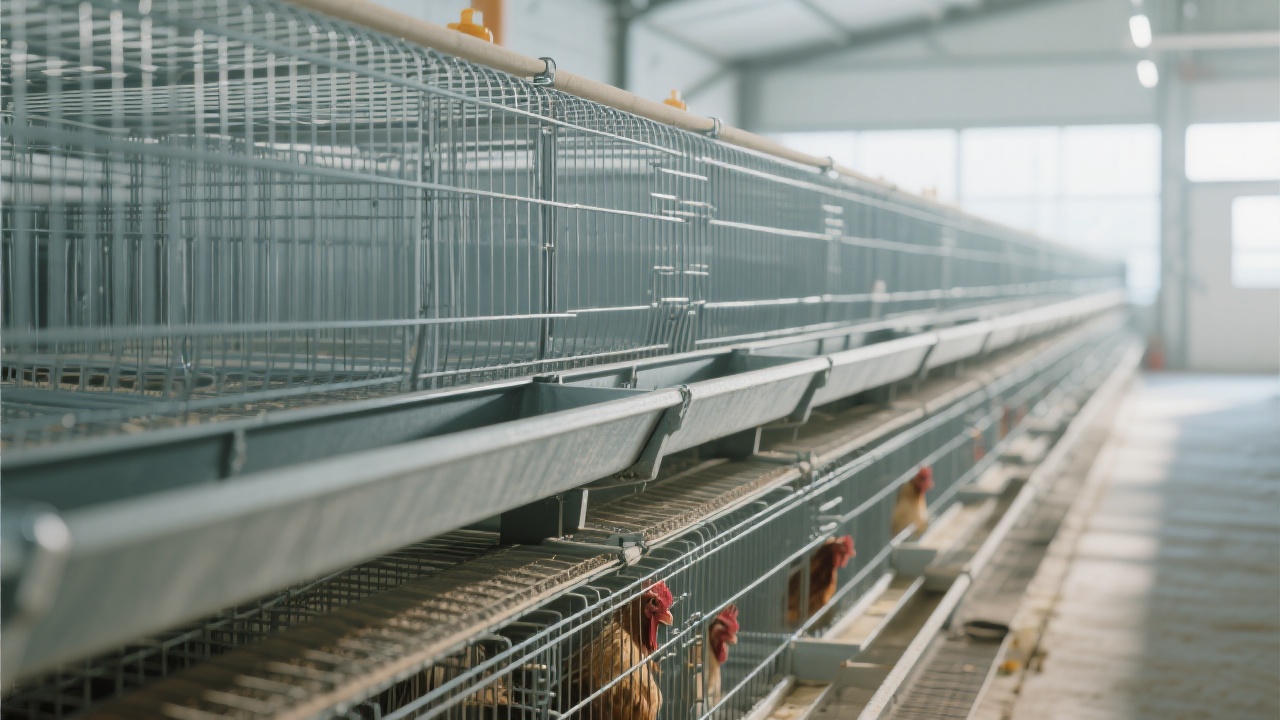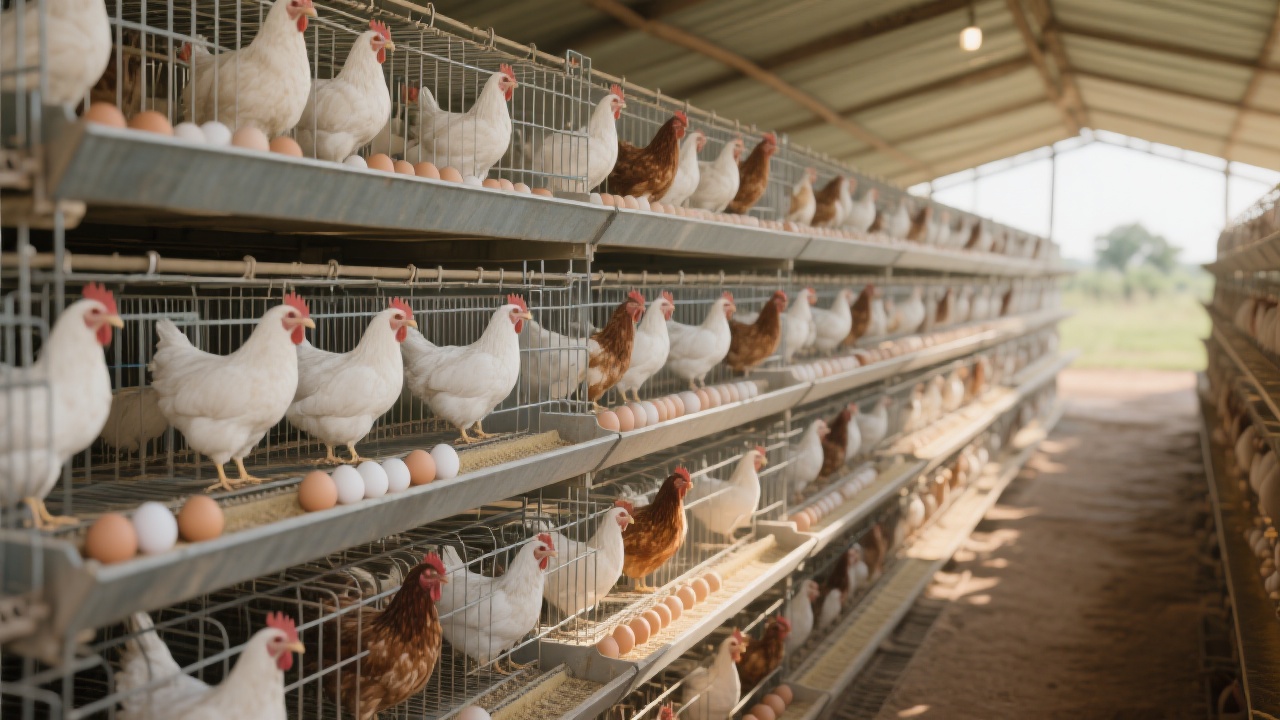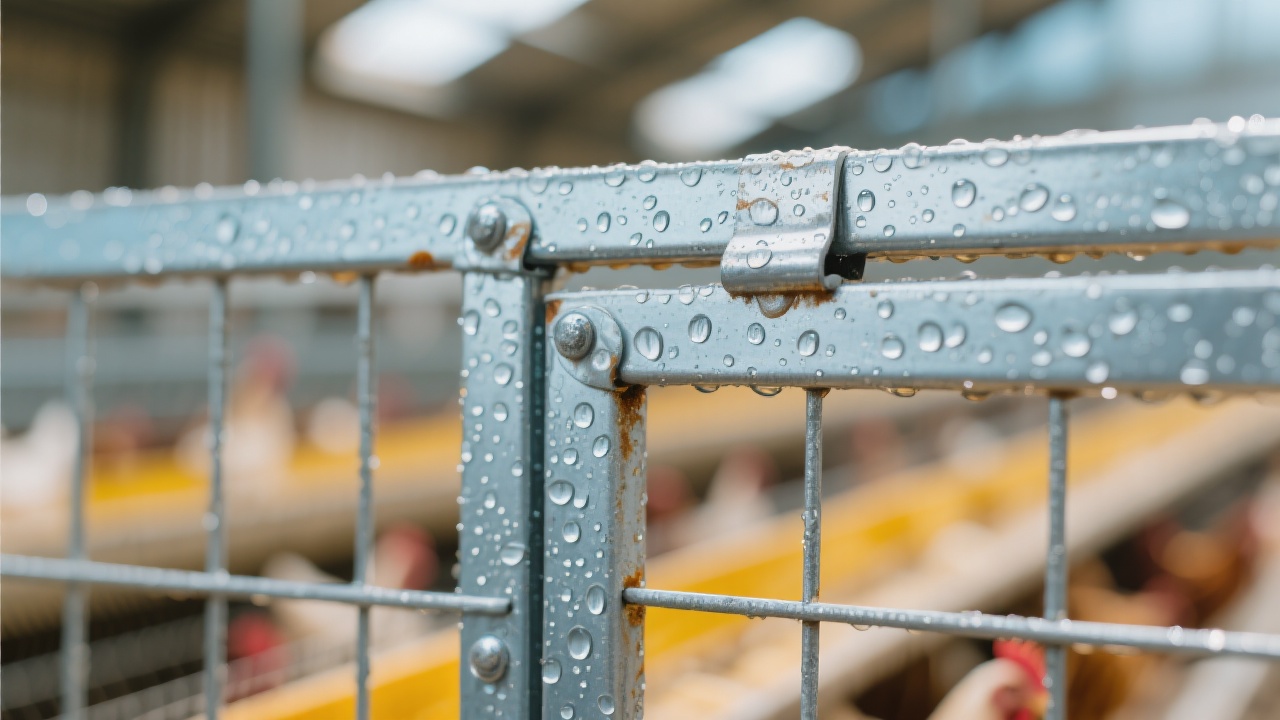
In your egg-laying barns, high temperature and humidity are not just uncomfortable—they’re dangerous. Studies show that when air quality drops below optimal levels (especially ammonia concentration > 20 ppm), productivity can fall by up to 15%, and disease risk spikes. You know this better than anyone: poor ventilation means sick hens, lower yields, and wasted feed.
Many farmers assume natural airflow is enough—but in real-world conditions, especially during summer months, stagnant zones form between cages. These pockets trap moisture, heat, and harmful gases like NH₃ (ammonia). In one case from a farm in Spain, we found that without proper airflow design, the top tier of H-type cages had 4°C higher temperatures than the bottom—leading to a 12% drop in egg production.

The key lies in smart structure: H-type cages aren’t just stacked—they’re engineered with intentional gaps between tiers and optimized mesh layout. This allows wind pressure to push air downward, creating consistent circulation even in large sheds. Compared to traditional flat-row setups, farms using H-type systems report 25–30% faster air exchange rates.
Now imagine sensors that don’t just monitor—but act. Modern CO₂, humidity, and temperature sensors (like those integrated into our smart ventilation kits) provide real-time data every 5 minutes. When they detect rising ammonia levels (>15 ppm), they trigger exhaust fans automatically. No more guesswork. No more late-night checks.
| Parameter | Ideal Range | Risk if Exceeded |
|---|---|---|
| Temperature | 18–24°C | >28°C → reduced feed intake, stress |
| Humidity | 55–65% | >75% → respiratory issues |
| Ammonia (NH₃) | <15 ppm | >20 ppm → eye irritation, reduced egg quality |

You don’t need to rebuild your entire barn. Start small:
In a recent project with a 10,000-hen facility in Mexico, after installing our sensor-based ventilation system and optimizing cage spacing, ammonia dropped from 28 ppm to under 12 ppm within two weeks—and egg output increased by 9%. That’s not magic—it’s precision.

Let’s be honest—you’re not just raising chickens. You’re building a business. Every breath your flock takes should support their health, comfort, and productivity. With smart sensors and thoughtful cage design, you’re not just managing climate—you’re maximizing value.
What challenges have you faced with ventilation in your barn? Share your story—we’ll send you 3 tailored solutions used successfully by similar farms worldwide.

